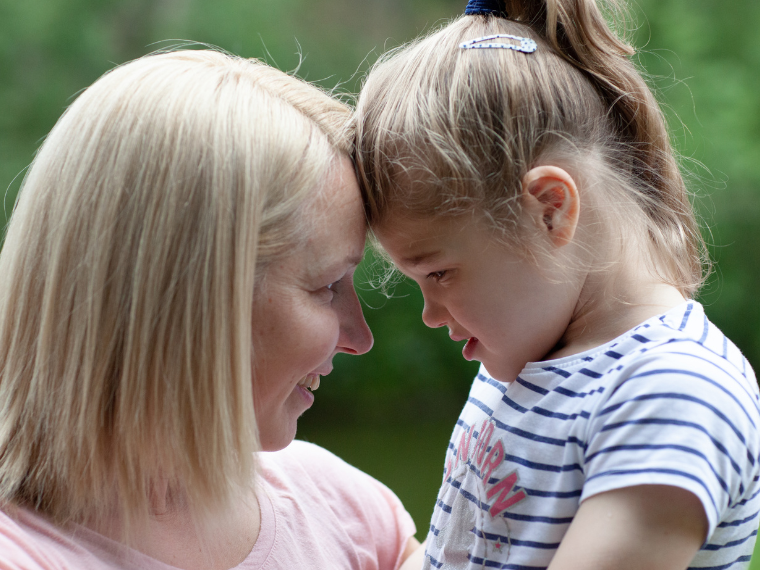
Diagnosis and treatment
Discover the typical features of Dravet Syndrome – intervene early and you can change someone’s life.

Epilepsy and intellectual disability are the main challenges for children and adults with Dravet Syndrome. However, they also have a number of other associated neurodevelopmental conditions or health problems, known as ‘comorbidities’.
Some comorbidities are more common than others, and how severe they are varies for each person. Below is more information about the most common comorbidities seen in Dravet Syndrome.
More than half of children and adults with Dravet Syndrome report some characteristics of ASD. This association is most likely because the two conditions have underlying genes or brain functions in common, such as an imbalance between excitatory and inhibitory signals in the brain. ASD and Dravet Syndrome are both spectrum conditions. This means symptoms will vary considerably and children and adults with Dravet Syndrome will not necessarily have all the features typically associated with ASD.
In our experience, having a diagnosis of autism can still be beneficial for families, as it enables them to access additional therapies and support.
Similarly to ASD, symptoms associated with attention deficit hyperactivity disorder (ADHD) are common in Dravet Syndrome and a diagnosis of ADHD means caregivers can access appropriate treatment, which including medical and behavioural support.
Challenging behaviour is very common in people of all ages with Dravet Syndrome. It can often be difficult to manage and, as children get older, can become more of a disruption to daily family life than dealing with seizures. In a small number of cases, challenging behaviourcan include aggression, self-injury, withdrawal, and disruptive or destructive behaviour. Coping with this aspect of the condition can be very difficult for parents/carers and may have an impact on the quality of life of all the family.
It’s important to help caregivers recognise this is part of the underlying condition – it’s not ‘bad parenting’. If a family is showing signs that they’re struggling with challenging behaviour, consider referring them to a colleague in the wider disciplinary team, if this is appropriate for your area. You could also consider signposting the family to the Challenging Behaviour Foundation.
Sleep problems, mainly related to daytime sleepiness and night-time waking, are also typical in Dravet Syndrome. Sleep-wake transition disorders often affect children younger than five. Someone over 20 may have problems falling and staying asleep.
We don’t know the exact reason for poor sleep in Dravet Syndrome – many possible factors may contribute. What is clear is that sleep problems can have a major negative impact on the quality of life of both children and adults with Dravet Syndrome and their families. Lack of sleep can exacerbate behaviour problems, affect a child’s abilities to learn and provoke seizures. For parents and carers, lack of sleep and sleep disturbance can also have a huge impact on their ability to manage everyday life.The impact of sleeping difficulties can often be underestimated. It can have a huge on quality of life for the person with Dravet Syndrome and all the family.
Motor development and mobility slows after the first year. Children with Dravet Syndrome may start walking later (on average between 16 and 18 months and be unsteady on their feet for longer. They can also be slower to learn to speak. People with Dravet Syndrome may develop problems with coordination or ataxia and a variety of gait issues.
Typically, there’s a deterioration in gait after the age of 10. As a result, many people with Dravet Syndrome become increasingly dependent on their parents/carers to move around and do daily activities. The following types of gait alteration are commonly seen in Dravet Syndrome:
Managing and maintaining mobility can have a big impact on quality of life. Starting therapies as early as possible is recommended to help to avoid these difficulties getting worse. Consider referrals as appropriate to: a physiotherapist, occupational therapist, orthotics clinic and/or specialist gait clinic.
Around 60% of people with Dravet Syndrome show some growth and nutrition issues. These include: ‘failure to thrive’, osteopenia, scoliosis and problems with swallowing, eating, appetite, or absorbing nutrients.
Difficulties with eating, drinking and swallowing are common in children and adults with Dravet Syndrome. They vary from person to person and can be causedby a number of things, including side effects from medication, seizure activity and ASD. Sometimes problems with eating, feeding, swallowing or weight loss can become severe. In these cases, a gastrostomy may be an option.
Whether or not to have a gastrostomy can be a really difficult decision for caregiver to make. It’s important to know that, for A Dravet Syndrome UK survey found that 88% of people caring for someone with Dravet Syndrome had high levels of concern before the gastrostomy procedure. Over half (54%) said there wasn’t enough relevant information to support them. Afterwards their opinions were overwhelmingly positive, with 88% of carers saying they were happy that their child had had the procedure.
Children and adults with Dravet Syndrome may experience difficulties with digestion and urination. It’s not unusual for children with Dravet Syndrome to toilet train later than average. Depending on the level of disability, some may never be fully toilet trained and may remain incontinent throughout adulthood. If caregivers are struggling with managing incontinence, refer to the local NHS continence service. As well as advice, they may be able to supply practical items, such as nappies and pads.
The term dysautonomia covers a range of issues, including problems with temperature change, decreased sweating, tachycardia, low blood pressure, fainting and dizziness, and sluggish digestion and blood circulation. Depending on symptoms, an electrocardiogram (ECG) might be appropriate and onwards referral to a cardiologist, depending on what the initial tests show.

Discover the typical features of Dravet Syndrome – intervene early and you can change someone’s life.

Discover more about the genetic mutations of Dravet Syndrome and how to test for them.